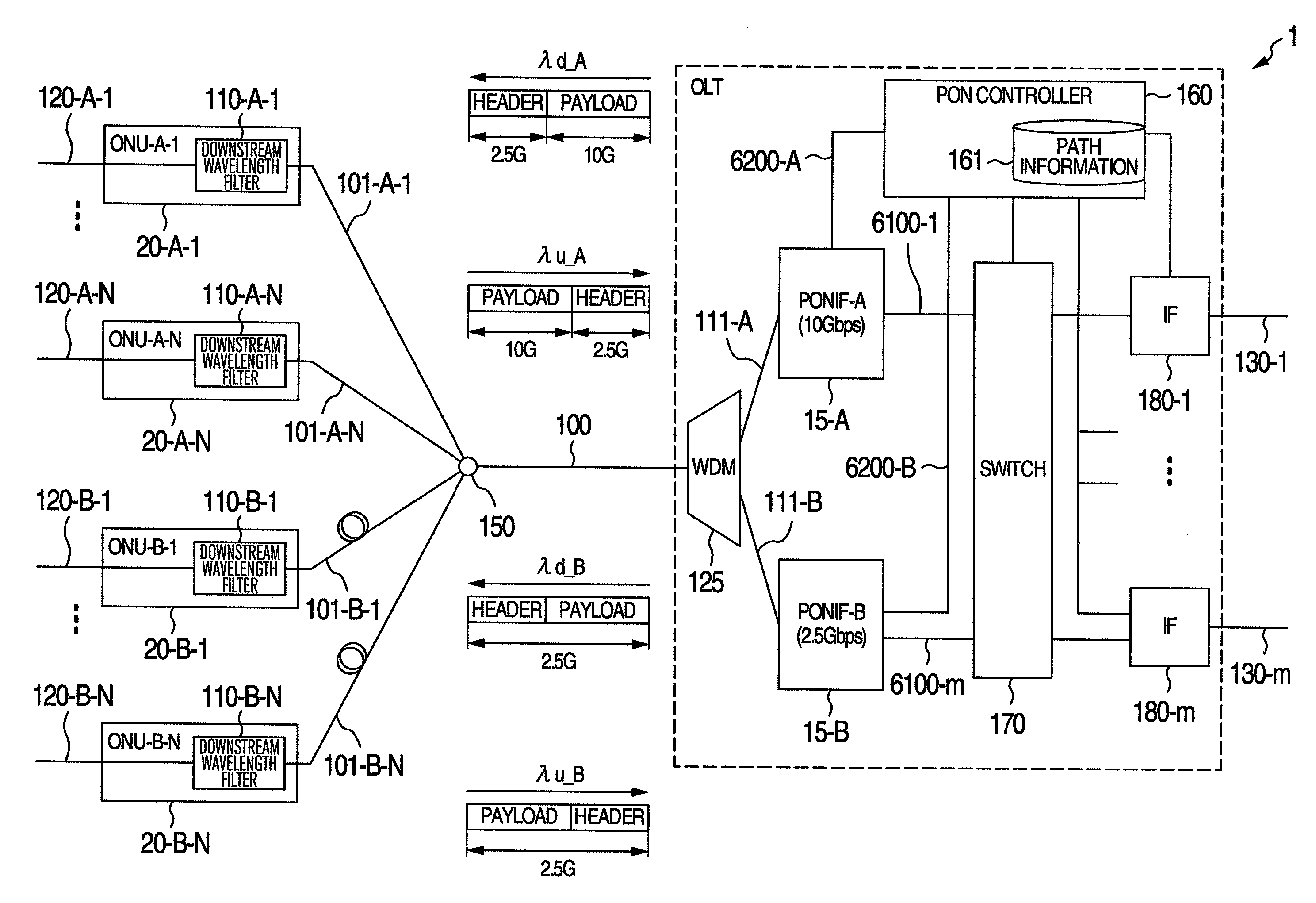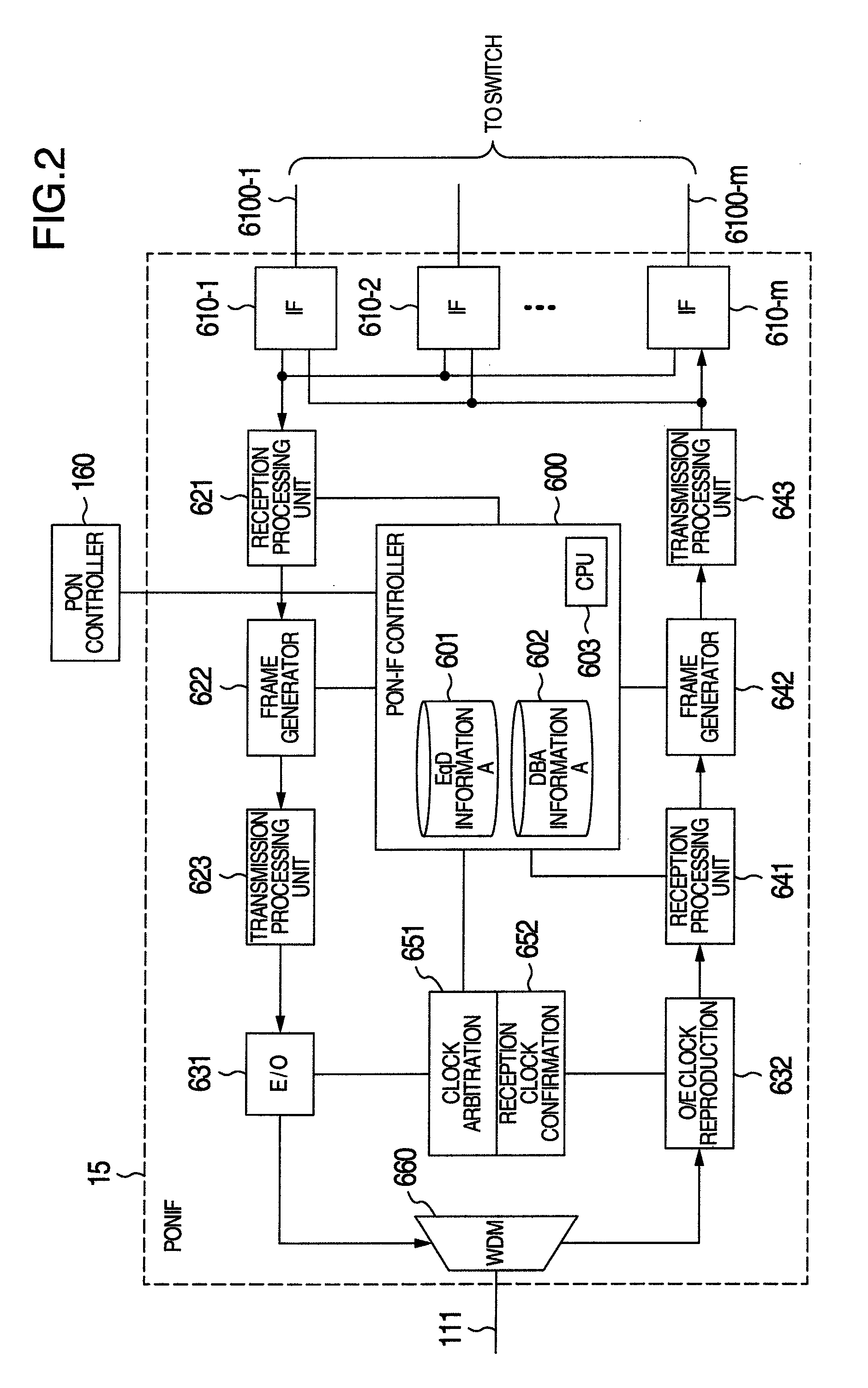Passive optical network system and operation method of the same
a passive optical network and operation method technology, applied in the field of configuration and operation of passive optical network systems, can solve the problems of increasing noise on the receiver side, reducing transmission distance, and dispersing distance between the olt, so as to reduce the power consumption of the communication apparatus, the system cost is not increased, and the dynamic range which can be covered by a single station can be expanded.
- Summary
- Abstract
- Description
- Claims
- Application Information
AI Technical Summary
Benefits of technology
Problems solved by technology
Method used
Image
Examples
Embodiment Construction
[0025]Referring now to the drawings, description will be given in detail of structure and operation of a PON according to the present invention, specifically, in a situation wherein the PON includes the GPON stipulated by ITU-T Recommendation G.984 and the 10GPON handling data at a transmission speed which is four times that of the GPON and which will be expectedly introduced in the future.
[0026]FIG. 1 shows an example of structure of an optical access network employing the PON.
[0027]This network is configured on assumption that variable data is processed by use of a time-division multiplexing scheme as in the GPON. Data (payload) is communicated between an OLT 10 and each ONU 20 at a transmission speed of 2.5 Gbps (precisely, 2.48832 Gbps, but will be abbreviated as 2.5 Gbps hereinbelow) in the GPON and 10 Gbps (precisely, 9.95328 Gbps, but will be abbreviated as 10 Gbps hereinbelow) in the 10GPON. Headers are communicated between the OLT 100 and each ONU 20 at a transmission speed...
PUM
 Login to View More
Login to View More Abstract
Description
Claims
Application Information
 Login to View More
Login to View More - R&D
- Intellectual Property
- Life Sciences
- Materials
- Tech Scout
- Unparalleled Data Quality
- Higher Quality Content
- 60% Fewer Hallucinations
Browse by: Latest US Patents, China's latest patents, Technical Efficacy Thesaurus, Application Domain, Technology Topic, Popular Technical Reports.
© 2025 PatSnap. All rights reserved.Legal|Privacy policy|Modern Slavery Act Transparency Statement|Sitemap|About US| Contact US: help@patsnap.com



